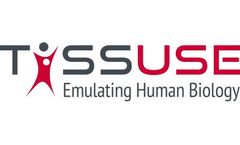Refine by
Lung Tissue Articles & Analysis
18 news found
A recent study by Rojas-Ruiz et al (2025) utilizes SCIREQ’s innovative physioLens (ex vivo) and flexiVent (in vivo) platforms to shed light on the interplay between lung tissue compliance and methacholine response, offering new insights into the mechanisms driving asthma pathology. ...
Yang, L., et al (2024) introduces LungVis 1.0, an AI-driven imaging platform integrating light sheet fluorescence microscopy (LSFM) and deep learning for mapping nanoparticle (NP) deposition across murine lungs. The research highlights the advantages of aerosol-based delivery methods over traditional liquid-based approaches, emphasizing the uniformity of NP deposition in distal alveolar ...
Chronic Obstructive Pulmonary Disease (COPD) is a global health burden characterized by persistent airflow limitation and progressive lung damage. Despite extensive research, translating findings from bench to bedside remains a challenge. Precision Cut Lung Slices (PCLS) have emerged as a versatile tool in COPD research, offering unique advantages for understanding disease mechanisms and ...
Idiopathic pulmonary fibrosis (IPF) is a devastating disease characterized by progressive scarring of the lungs, which severely impairs lung function over time. Developing effective treatments for IPF has been a challenge for the medical community, as the mechanisms driving this disease are complex and not fully understood. To accelerate drug discovery, animal models that closely mimic the ...
Obtaining viable single cells from lung tissue is essential for understanding respiratory function and disease mechanisms. ...
Until now, the only other options for these patients were invasive treatments such as lung volume reduction surgery or lung transplantation. The one-way Zephyr Valves are placed in a selected lobe of the lung (generally the most diseased lobe and with little to no collateral ventilation) during a bronchoscopic procedure to occlude the target ...
It is specifically designed to preferentially block CB1 receptors in peripheral tissues such as the kidneys, gastro-intestinal tract, liver, pancreas, adipose tissues, muscles, lungs and other organs. ...
Pulmonx Corporation (Nasdaq: LUNG) (“Pulmonx”), a global leader in minimally invasive treatments for severe lung disease, announces the presentation of interim results from the CONVERT Study at the 2022 European Respiratory Society (ERS) International Conference. ...
“We have more insight into the lung vasculature, tissue, and airways,” De Backer comments. Exemplifying this increased insight, he adds, “We could immediately see what happens in patients with COVID. ...
ByFluidda
IPF is a chronic and ultimately fatal disease that causes lung tissue to stiffen, leading to permanent lung scarring that makes it harder to breathe. As IPF progresses, patients often need oxygen and, in some cases, lung transplantation. With a median survival of ∼3 years, the prognosis can be devastating, and there is a ...
"The FDA's approval of Oncomine Dx Target Test enables clinicians to use FFPE tissue samples to identify patients in the U.S. who may benefit from this important new therapy," said Garret Hampton, president, clinical next-generation sequencing and oncology at Thermo Fisher Scientific. ...
TissUse has established the widely used HUMIMIC Multi-Organ-Chip (MOC) platform, which enables functional human tissue response in vitro. A plug&play interface between the two technologies will allow physiologically relevant exposure to complex aerosols in the background of an in vivo-like organization and breathing performance of the human lungs. ...
“The breadth and complexity of lung diseases demand innovation for both diagnostic and therapeutic workflows. ...
Lung Therapeutics LTI-03 uniquely inhibits both fibroblast activation and promotes the survival and function of alveolar epithelial cell subtypes needed for lung regeneration in IPF. ...
Central to the innovation is a biological scaffold, adapted from pig lung tissue, that holds beta cells. Those cells release insulin based on the patient’s blood sugar levels. ...
Betalin’s ground-breaking bio-artificial pancreas was engineered using pig lung tissue and cells secreted by insulin. It can identify a patient’s blood sugar level and accurately dispense the required amount of insulin as needed, rendering all future injections, drugs or blood glucose measures obsolete. ...
Ideally, the team would have used pancreatic cells to create the micro-scaffolds on which they build their micro-organs, but they discovered that lung tissue worked better. For one thing, as Mitrani explained to Haaretz, 95% of the tissue in our pancreases is involved in producing digestive enzymes, not insulin regulation. For another, the ...
The EPA tested samples of the erionite-containing gravel, and found that the particles were of a size that was able to be inhaled and collect in lung tissue. The EPA has also been trying to determine what the effects of long-term exposure to the Dunn County erionite might be, but an EPA On-Scene Coordinator, Joyce Ackerman, pointed out that it’s difficult to ...












